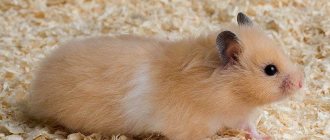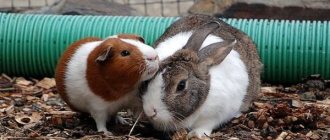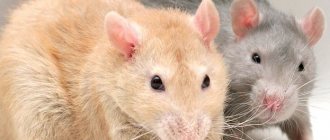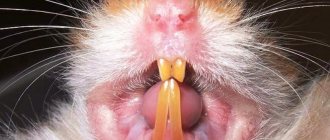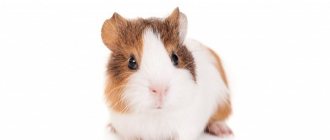If your baby has expressed a persistent desire to have a pet, then it is better to choose a small pet, for example, a rodent. Before purchasing, you should study information about which hamster is best to get, how to arrange its home, how to make it tame and how to care for it.
Don't forget to consult with your children about what color and size animal they want.
It is best to buy a hamster at a pet store, because its employees will tell you about the characteristics of the breed and the rules of care. But not everyone has this opportunity, so this article will discuss which hamster is best to buy so that it becomes a favorite for the whole family.
Which hamster is better to get: characteristics of popular species
Today, many breeds of the rodents in question are known, but not all of them can be kept at home and allowed near children.
Despite their small size, hamsters can be quite aggressive. In addition, they can in some cases cause allergies. Therefore, before buying a hamster, it is advisable to borrow an animal from friends for a few days and check the reaction of the family members. The most popular rodents that can be kept at home include the following breeds:
- Djungarian is a common species. They have gray fur with a dark stripe on the spine and are classified as dwarf because they do not grow more than ten centimeters. Compared to other breeds, they are best tamed, but due to their small size, it is better not to have them in homes with children of kindergarten age - the nimble animal can slip out of children’s hands and get injured. Suitable for children from 10 years old.
- The Campbell breed looks practical in appearance, like the Djungarian, but their character is quite capricious and they bite. Individuals have a more yellow color and a paler stripe on the back.
- Roborovsky's hamsters are one of the smallest and rarest representatives (adult animals are no larger than 6 cm). A characteristic difference is socialization; they get along with same-sex relatives in the same cage. Kids will have fun watching a bunch of rodents, but they are unlikely to be able to pick them up - they are shy.
- Among Syrian hamsters, the royal hamster is the largest representative of the breed. Adults can be compared in size to a guinea pig. A distinctive feature is that they respond to the sound of their nickname. They are quite hardy in terms of physical health and life expectancy is 3–4 years. If you want to get a rodent for your home, then choose them, but remember - if handled roughly, they will show retaliatory aggression. The coat has different lengths - Angora with long hair and short-haired. Color - from golden to black. The only inconvenience is that they need a large cage. A 7-9 year old child can handle this animal on his own.
- The grasshopper (scorpion) hamster is a wild predator that eats even lizards or scorpions, and is solitary by nature. Therefore, zoologists do not recommend purchasing it for children.
- Siberian (White Russian Dwarf). It differs in that it changes the color of its coat depending on the time of year. It grows up to 10 centimeters and gets along well with people and is friendly.
- Eversmann's hamster is a wild field animal reaching a length of 16 centimeters. It is extremely rare in captivity and is asocial, so it should not be given to children.
Red-eyed albinos are found in every breed. You should not be afraid of them - the unusual color is explained by genetic changes. Such animals are healthy and no different from other “colored” relatives.
Economic importance
Hamsters, like most rodents, harm grains, vegetables, and feed crops.
They trample and eat most of the plants around their burrow.
Wild species are carriers of pathogens: tularemia and tick-borne fever.
Pets can infect humans with skin fungus, and in rare cases, tuberculosis.
In southern countries, hamster skins are harvested.
Boy or girl? Character traits
If you don’t know what kind of rodent to get so that it gets along with kids, pay attention to gender. Unlike rats or other small pets, hamsters are not sterilized, so due to hormonal characteristics, the character and behavior of a male or female differs.
- Boys are larger than girls, they are calmer, more patient and affectionate, but they “mark” their territory, so an unpleasant odor if their home is not cleaned in a timely manner is guaranteed.
- Hamsters are more mobile and active, but at the same time they are also “hot-tempered”, especially during pregnancy or immediately after birth. They can injure the male, so they should be removed immediately after fertilization. In addition, females sometimes experience health problems related to the reproductive organs (endometritis).
How to choose a hamster for a child: general tips
Hamsters are sold at any bird market.
A large number of animals in one place causes the spread of infectious diseases and parasites. A cage standing in frost or draft leads to colds and hypothermia. Therefore, preference should be given to specialized stores where animals receive proper care. The rodents in question are active at night, so to choose a healthy hamster, you should go to the pet store in the evening. A healthy rodent actively moves around the cage, runs on a wheel, digs in food and bedding, and does not limp. When a hamster is not sleeping, it should not show apathy or freeze in a stupor.
Pay attention to the age of the fluffy. Cubs up to a month old require special care - they need to be provided with enhanced heating and nutrition with special mixtures from a pipette.
After three months, the animal already has formed habits and is difficult to train. Therefore, the optimal age for choosing Syrian or other hamsters is 1 or 2 months.
Conduct a self-examination of the rodent. Take him in your arms - there should be no bald spots or lumps on the body. Signs of a health condition are:
- Smooth and shiny skin without bald spots.
- No nasal or eye discharge.
- Active behavior without obvious signs of overexcitation.
Yellow teeth are normal. This is explained by the characteristics of animal tooth enamel.
Allergy
It is generally accepted that some people experience increased sensitivity to animals only in relation to pussies and dogs, however, an allergy to rodents can also develop due to intolerance to the protein in the animal’s urine.
Therefore, when considering whether to get a hamster, first determine whether children and adults are allergic to these pets.
Housing and diet of the animal
When buying a hamster, take care of its housing. Depending on the size of the animal, a cage or aquarium is selected, inside which a house is installed where the rodent will rest during the day. The floor of the cage is filled with filler, which should be changed 3 times a week. Fluffies are prone to obesity, so immediately purchase special exercise equipment - a running wheel, tunnels and ladders. Hamsters have teeth that grow throughout their lives, so there should be a chalk stone in their home on which they can be ground down.
When looking for a place to install the cage, choose a warm, secluded corner near the radiator and away from drafts. However, it is not recommended to place small rodents in your or your child’s bedroom, since these babies tend to be active at night, which will disturb your sweet sleep.
The rodent's diet should be balanced - proteins of plant and animal origin, cereals, fresh vegetables and fruits. There are quite a lot of special vitamin mixtures sold in stores at an affordable price. It is not necessary to feed animals often, otherwise they will stockpile food, which can lead to poisoning from stale food.
The well-groomed appearance and life expectancy of a hamster, regardless of breed, is entirely your task and that of your children. Teach them to take care of their “little brothers” and your pets will respond with boundless love.
When children tearfully ask for a pet, the solution may be to purchase a rodent, of which the cutest are hamsters. You just need to decide in advance which hamster is best to get, and also find out where and how to choose a hamster for a child, so that the pet brings joy, not problems.
From 7-8 years of age, a child can take care of a furry friend independently, which develops a sense of care and responsibility. Although it is better for parents to choose a hamster, it is worth asking the opinion of the little owner or mistress - what color of the hamster you want, who is better - a boy or a girl. This way the child will feel a connection with the pet, and it will be easier to make friends with it.
Adults are interested in more mundane questions - will the hamster smell in the apartment, how easy will it be to care for, will the hamster bite a child.
Women's consultation
Hamsters bear children quite quickly, depending on the breed, 14-25 days, only their relatives, voles, carry the same amount of time, and how many cubs are born to cheeky rodents, the darkness is dark, from 4 to 16 tiny little ones.
So, if you suspect the female is pregnant, start unobtrusively praising these cute creatures to everyone you know, so that they will also express a desire to acquire a funny little animal, which you will offer them as a gift after a happy hamster birth. Moreover, let everyone know that keeping hamsters at home other than in pairs is highly not recommended, but it is better to take three of the same sex at once (so that they don’t breed anymore).
Male or female
Since small rodents, unlike other domestic animals, are not subject to sterilization, males and females will behave somewhat differently, being at the mercy of sex hormones. However, when kept alone, there is no fundamental difference between them.
Males are somewhat larger and calmer, but they have more odor: they specifically mark their territory with urine, which smells stronger than that of females. Boys' fur is also more fragrant. Consequently, the boy hamster's cage will need to be cleaned more often. Males are more affectionate and patient.
№9
They have very poor eyesight. They suffer from myopia and, like many animals, see everything only in black and white. However, poor eyesight was replaced by an excellent sense of smell. Hamsters easily distinguish each other by smell and also easily recognize their owner by smell.
They are also sensitive to sounds. They can hear in the ultrasonic range.
In addition, they have sensory nerves at the ends of their antennae, which help them sense their surroundings and more easily navigate in the dark.
Breed
Which hamsters are best to keep at home? Different types of hamsters differ not only in size, color and length of fur. Focus not only on attractive appearance, but also on temperament characteristics. The most popular breeds of hamsters are Djungarian and Syrian (on our website there is a detailed comparison of Djungarian and Syrian hamsters).
Syrian hamster
The largest of the decorative hamsters (body length 12-18 cm, weight 100-200 g). You won't find anything better for a child. Advantages of being a Syrian:
- clean, wash their fur thoroughly, have a slight odor;
- live longer than “dwarfs”, 2-3 years, sometimes up to 4 years;
- varied exterior: there are long-haired (Angora) and short-haired, of a wide variety of colors - from golden to black;
- It is easier for a child to pick up a large animal without fear of dropping or injuring it;
- the most tame and kind hamster of all.
The Syrian hamster is the only species that can be trained to respond to its name. These rodents are not prone to aggression, are easily tamed, and recognize their owner.
Difficulty: a large hamster needs a large cage and a running wheel of a substantial diameter. If the living space does not allow you to keep a Syrian in appropriate conditions, you can take a closer look at dwarf hamsters.
Djungarian hamster, Campbell's and Roborovsky's hamsters
Small animals weighing up to 50 g, 5-10 cm in length. They have common disadvantages if the hamster is intended for a child:
• small and nimble, they easily slip out of your hands, which can lead to injury; • if the pet manages to escape, finding the tiny rodent will not be easy; • can be aggressive, difficult to tame, shy.
Djungarians are considered the most “domesticated” of all dwarf hamsters; they are calmer than Campbell's hamsters. The problem is that these breeds are not easy to distinguish by appearance. You should find out in advance how to choose a Djungarian hamster so as not to buy a wild Campbell instead.
Roborovsky's hamsters are the only ones that can tolerate the company of their relatives, provided that all animals are of the same sex. It is very interesting to watch a whole flock of active tiny rodents, but it is almost impossible to pick up such a baby. A frightened animal will bite and escape; Roborovskie are almost never tamed.
Roborvsky's hamster
After Syrian hamsters, Djungarians are a good choice of pet for a child. Many of their owners claim that the tamed animal is friendly and sociable.
Djungarian hamster
Where can I buy?
Having decided on the gender, age and breed of the future pet, a person thinks about where to buy and how to choose the right hamster. There are plenty of purchasing opportunities.
Bird Market
There is a market where all kinds of living creatures are sold in every city. It is strictly not recommended to take a hamster from a poultry market for a number of reasons:
Sick animals are often sold
Market hamsters are stressed and kept in terrible conditions. Overcrowding leads to the spread of infectious and parasitic diseases. If the cage is in a draft, the rodents may catch a cold. Due to savings or oversight, animals sometimes suffer from low-quality feed.
If such a hamster dies after being brought home, it is not possible to complain or return money for the animal.
Invalid data
The seller may lie about the date of birth of the hamsters, and the purity of their blood will remain a mystery. Not to mention the embarrassment when “that fat boy” turns out to be a pregnant girl!
The only argument in favor of the market is the wide choice. You can find a hamster of any breed and color, buy a cage and food.
Pet Shop
In a pet store, animals are more likely to be healthy. Minuses:
- limited choice;
- adult rodents that have “stayed too long” can be sold, and the life of hamsters is already short;
- Sellers rarely give competent advice on care. They claim that the hamster “eats everything” and is “unpretentious” in order to sell the animal.
The price in the pet store is higher than the market price, but the conditions in which the hamsters are found are more favorable.
Getting used to the new home
In order for your new guest to quickly get used to his new conditions, give him a few days to leisurely explore his home. Once the initial stress has passed, innate curiosity will take over and the hamster will begin to explore its cage with interest, feeling increasingly confident.
If there is a need to take the animal, for example, to the veterinarian, it is not at all necessary to take the entire cage with you - it is enough to purchase a small carrier for rodents. Subsequently, it will come in handy during general cleaning of the cage. Alternatively, a well-ventilated cardboard box can be used.
flickr/pyza
How to choose a healthy one?
Choosing a hamster is a responsible undertaking. The buyer should be able to independently distinguish a sick animal from a healthy one, without relying on the seller’s advice. When deciding which hamster to choose from a pet store or from a breeder from a large litter, you need to focus on the following points:
Conditions of detention
Even before examining the hamsters, they evaluate the room in which they are located. There should be no unpleasant smell, drafts, or noise. Take a closer look to see if the cage is clean, what quality of food is in the feeder. Males and females should be kept separately: early pregnancy is dangerous for a young hamster, and the buyer receives an unplanned litter.
Health status
You need to take home a hamster that looks perfectly healthy. Shiny thick fur, no bald patches and traces of scratching. Clear shiny beady eyes. To assess fatness and make sure that there are no lumps on the body (abscess, tumor), you will have to pick up the animal. The coat must be completely dry and no discharge is allowed. Inspect the areas around the eyes, nose, ears, mouth, genitals, and anus. If there are signs of diarrhea or excessive salivation, the purchase is cancelled.
Behavior
Hamsters, even in captivity, remain nocturnal animals, sleeping most of the day, so you need to take a closer look at the animal in the evening. A healthy rodent actively moves around the cage, runs on a wheel, digs in food and bedding, and does not limp. When a hamster is not sleeping, it should not show apathy or freeze in a stupor.
It is important to evaluate the animal’s temperament - try to pick it up, or ask the owner to do so. If the hamster squeals, bites, and breaks out, it will be very difficult to tame it.
Age
Hamsters are taken at the age of 1-2 months. If you buy a baby under 3 weeks old, it may die. Sometimes they try to sell adult animals under the guise of young animals. Whatever happens to you, you need to be able to determine the age of the hamster. A rodent older than 4 months will be difficult to tame.
The nursery knows when the babies were born. At the market and in the pet store, it is advised to weigh the animals. The weight of an adult Syrian hamster is 150-200 g, the Djungarian hamster is 40-60 g. They reach this size by 6 months.



